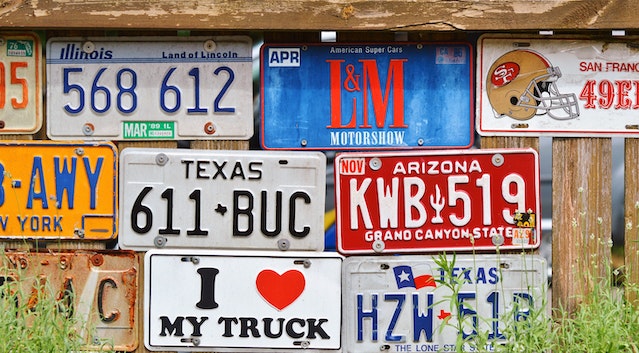Finding Your Vehicle’s VIN Number Using Registration
Your vehicle’s Vehicle Identification Number (VIN) is a unique code that acts as a fingerprint for your car. It holds crucial information about your vehicle’s make, model, year of manufacture, and more. Locating your VIN is essential for various purposes, such as vehicle registration, insurance, maintenance, etc. But what if you only have your vehicle’s registration document? Can you still find your VIN? The answer is yes, and we’ll guide you through the process step by step.
Table of Contents
Understanding the VIN Number:
Before we dive into how to find my vin number from reg, let’s understand what a VIN is and why it’s essential. A VIN is a 17-character alphanumeric code that is unique to every vehicle on the road. It’s like your car’s DNA, containing information about its origin, specifications, and history. This code is usually found on the dashboard near the windshield, the driver’s side door jamb, or the vehicle’s title and registration documents.
Steps to Find Your VIN from the Registration:
- Locate Your Registration Document: The first step is to find your vehicle’s registration document. This document is typically issued by your local Department of Motor Vehicles (DMV) and contains essential information about your vehicle, including the VIN.
- Inspect the Document: Once you have your registration document, look for a section that provides vehicle details. This section might be labeled as “Vehicle Information,” “Vehicle Details,” or something similar.
- Identify the VIN: In the vehicle details section, you should be able to spot the VIN. The VIN is a 17-character code that may consist of numbers and letters. It’s usually prominently displayed, making it easy to locate. Take your time to ensure you’ve copied the VIN correctly, as even a single character can make a difference.
- Cross-check the VIN: After locating the VIN on your registration document, it’s a good practice to cross-check it with other documents. If you have access to your vehicle’s title or insurance documents, compare the VIN to ensure accuracy.
- Take a Photo or Note it Down: It’s a smart idea to take a photo of the VIN on your registration document using your smartphone. Alternatively, you can note down the VIN on a piece of paper. This way, you’ll always have easy access to it when needed.
A Vehicle Identification Number (VIN) is a unique code composed of 17 alphanumeric characters that serves as a distinctive identifier for a specific vehicle. Each VIN is like a fingerprint for a vehicle, containing essential information about its make, model, manufacturing details, and more. Understanding the structure of a VIN can provide insights into a vehicle’s history, specifications, and origin.
What is the 17-digit VIN Number?
Here’s how the 17-digit VIN is typically structured and what each segment represents:
- World Manufacturer Identifier (WMI): The first three characters represent the WMI, which identifies the manufacturer and the country where the vehicle was produced.
- Vehicle Descriptor Section (VDS): The fourth through eighth characters make up the VDS, providing information about the vehicle’s attributes such as the model, body style, engine type, and series.
- Check Digit: The ninth character is a check digit used to verify the accuracy of the VIN. It helps detect any errors or tampering with the VIN.
- Vehicle Identifier Section (VIS): The 10th through 17th characters form the VIS, which includes details about the vehicle’s assembly plant, production sequence, and manufacturing year.
Breaking down the VIN number:
- Example VIN: 1HGCM82633A123456
- 1HG: WMI indicating the manufacturer (in this case, Honda) and the vehicle type.
- CM826: VDS indicating further details about the vehicle, such as body style and engine type.
- 33: The check digit, ensures the VIN’s validity.
- A123456: VIS indicating specifics like assembly plant, production sequence, and model year.
By interpreting the VIN, you can gather information about the vehicle’s manufacturer, model, engine type, manufacturing location, and model year. Additionally, various online tools and databases can provide more detailed information, including a vehicle’s history, accident reports, recalls, and more based on the VIN.
It’s worth noting that VIN formats may vary slightly between different manufacturers and regions, but the general structure remains consistent. Whether you’re buying a used car, researching a vehicle’s history, or ensuring parts compatibility, the 17-digit VIN plays a crucial role in identifying and understanding vehicles.
Why Finding Your VIN Matters?
Finding your VIN using your vehicle’s registration is crucial for several reasons:
- Vehicle History: The VIN provides access to the vehicle’s history, including past accidents, ownership changes, and more.
- Accurate Identification: When buying parts or accessories for your vehicle, providing the VIN ensures you receive the correct components.
- Insurance and Registration: Insurance companies and DMVs often use the VIN to verify your vehicle’s identity during the registration and insurance processes.
- Resale Value: Potential buyers often request the VIN to perform a vehicle history check before purchasing a used car.
Conclusion:
Locating your VIN using your vehicle’s registration is a straightforward process that ensures you have access to vital information about your vehicle. Whether you need it for insurance, maintenance, or any other purpose, having your VIN at your fingertips is essential. Remember that your VIN is a valuable tool that helps you better understand your vehicle’s identity and history, contributing to a safer and more informed driving experience. If you are planning to buy a used car and want to know how many owners a car has? then you can find car owners by registration number with The Auto Experts website that gives 100% cost-worthy information about the vehicle.










